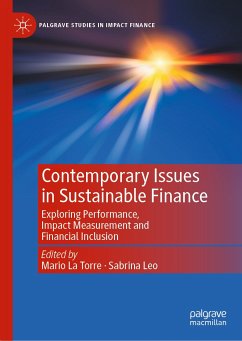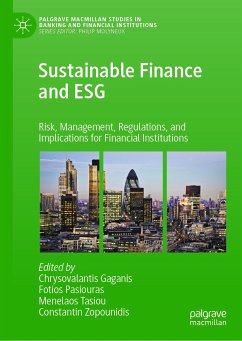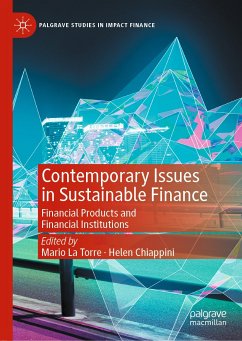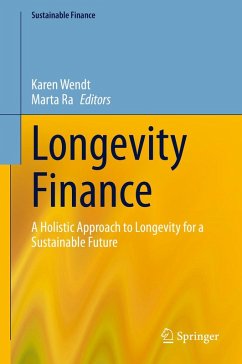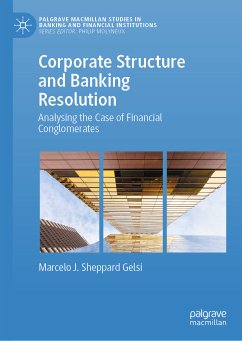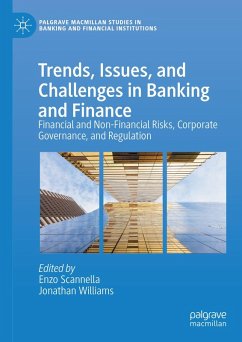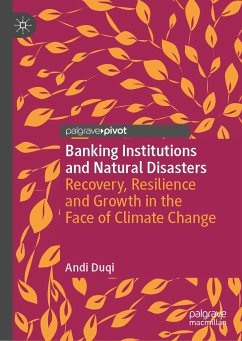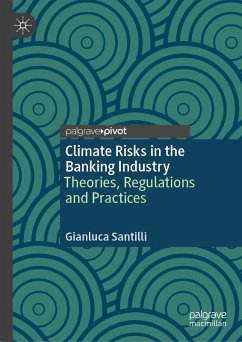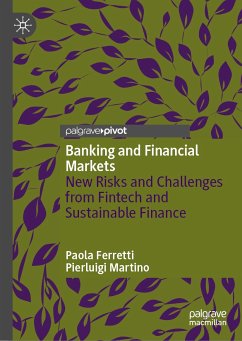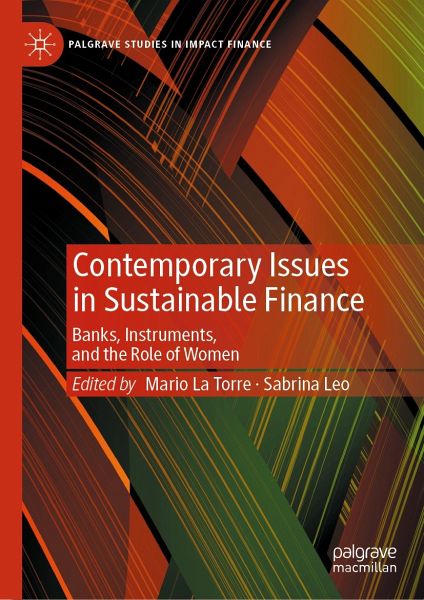
Contemporary Issues in Sustainable Finance (eBook, PDF)
Banks, Instruments, and the Role of Women
Redaktion: La Torre, Mario; Leo, Sabrina
Versandkostenfrei!
Sofort per Download lieferbar
120,95 €
inkl. MwSt.
Weitere Ausgaben:

PAYBACK Punkte
60 °P sammeln!
This book showcases cutting-edge research on a variety of themes related to sustainable and impact investments. It sheds light, theoretically and empirically, on three particular contemporary challenges for sustainable finance: shifts in banking towards prioritizing sustainable growth, the rapid evolution of sustainable bonds, and the growing role of women in sustainable finance.The first section of the book explores the benefits for banks and the financial industry from integrating sustainable finance into their business processes, as well as the role banks play in allocating resources toward...
This book showcases cutting-edge research on a variety of themes related to sustainable and impact investments. It sheds light, theoretically and empirically, on three particular contemporary challenges for sustainable finance: shifts in banking towards prioritizing sustainable growth, the rapid evolution of sustainable bonds, and the growing role of women in sustainable finance.
The first section of the book explores the benefits for banks and the financial industry from integrating sustainable finance into their business processes, as well as the role banks play in allocating resources towards a decarbonized economy. Chapters discuss risk reduction and the reputational boost for banks, as well as assessing the impact of new regulation frameworks targeted at sustainable growth. The second part examines sustainable financial products, with a focus on green bonds, and discusses how they can be used for long-term financing for sustainable projects, encourage accountability andtransparency, stimulate market growth, manage risk, and benefit the environment and society more broadly. The final section of the book takes an internal look at sustainable finance and addresses the significant role that women play, helping to develop more creative and practical solutions, serving as role models, and increasing involvement in the financial sector. Combining academic analysis with practical examples from the industry, this book will be useful to students and researchers working in sustainable finance, banking, and financial regulation.
The first section of the book explores the benefits for banks and the financial industry from integrating sustainable finance into their business processes, as well as the role banks play in allocating resources towards a decarbonized economy. Chapters discuss risk reduction and the reputational boost for banks, as well as assessing the impact of new regulation frameworks targeted at sustainable growth. The second part examines sustainable financial products, with a focus on green bonds, and discusses how they can be used for long-term financing for sustainable projects, encourage accountability andtransparency, stimulate market growth, manage risk, and benefit the environment and society more broadly. The final section of the book takes an internal look at sustainable finance and addresses the significant role that women play, helping to develop more creative and practical solutions, serving as role models, and increasing involvement in the financial sector. Combining academic analysis with practical examples from the industry, this book will be useful to students and researchers working in sustainable finance, banking, and financial regulation.
Dieser Download kann aus rechtlichen Gründen nur mit Rechnungsadresse in A, B, BG, CY, CZ, D, DK, EW, E, FIN, F, GR, HR, H, IRL, I, LT, L, LR, M, NL, PL, P, R, S, SLO, SK ausgeliefert werden.



